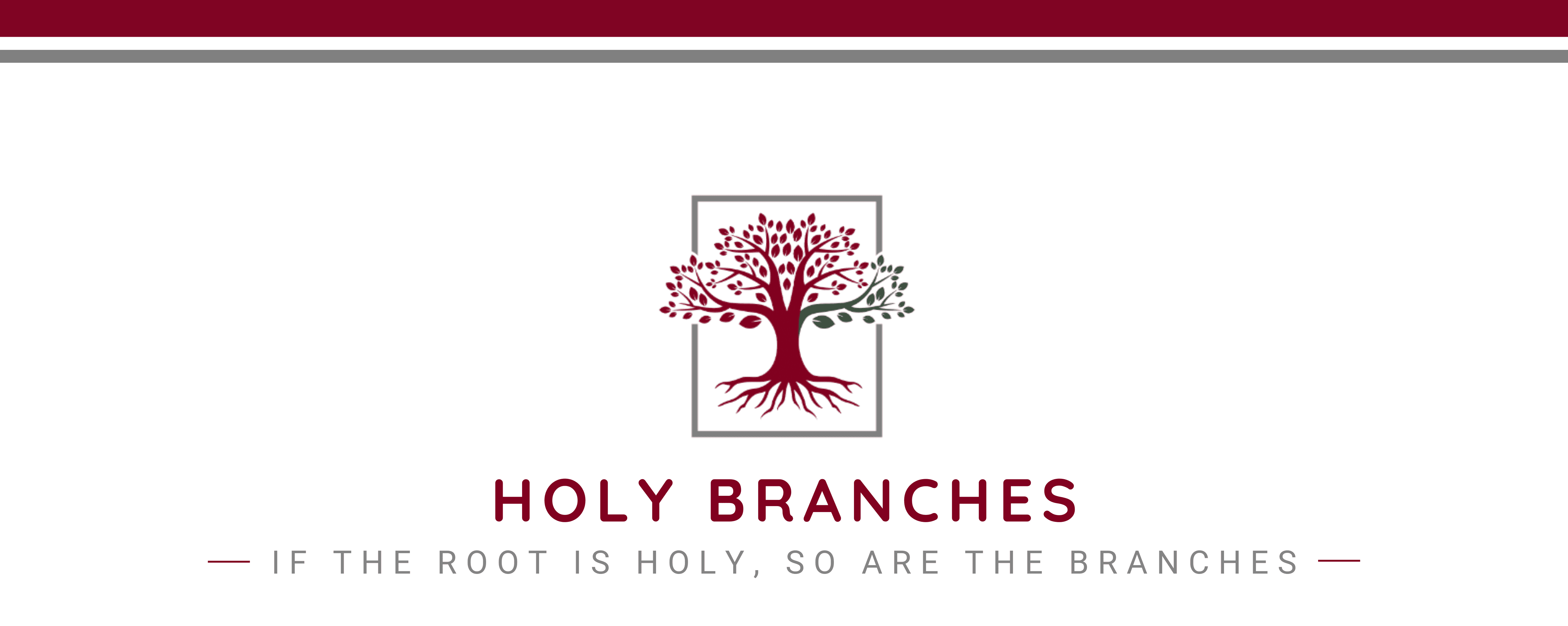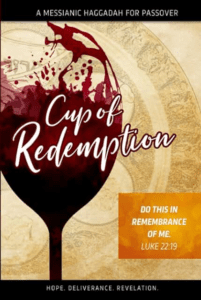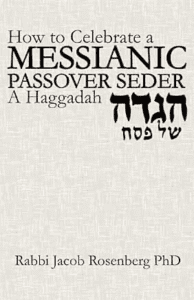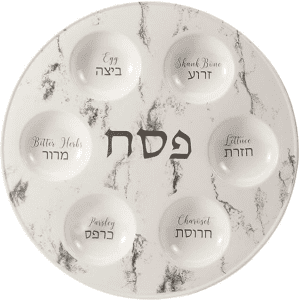Essential Items for Your Christian Passover Seder
As many followers of Jesus are realizing how important the Biblical Holy Days are to our faith, we look to Passover to remind us of the lamb. This Holy Day reminds us of both the lamb whose blood was spilled to save the Hebrew people from the plague of the firstborn in Egypt and of Jesus, whose blood saved all people from their destruction due to sin.
Passover also serves as a reminder that we were all once slaves in our sin and that Jesus, our Passover Lamb, freed us from that slavery in his death on the cross. Jesus also tells us that he’ll celebrate the Passover with us again in the future (Mark 14:24-25 and Luke 22:15-16)!
Check out my calendar for the upcoming Passover dates. Here are the main elements and supplies you’ll need to host a Passover Seder in your home, church, or other group.
1. Haggadah
This is just a booklet, one for each participant, that leads everyone through the Seder. In recent years, I’ve found more and more Haggadahs that are Messianic. This means they’ll focus on and incorporate the concepts of Jesus throughout the Seder. A Haggadah from a Jewish source (not Messianic Jewish) will cover the themes of the Passover, just without reference to Jesus. Here are a few different ones.
2. Bowl of Water and Towel
The first part of a Passover Seder is the washing of hands, signifying a clean and pure heart before God. Although we wash our hands for other meals, doing it in this way sets this time apart and puts our focus where it belongs. While not traditional, I’ve heard of some that use this time to wash one another’s feet like Jesus washed his disciples’ feet, which would be a beautiful way to start a Seder!
3. Seder Plate
A Seder Plate is specifically made to display the elements of the Seder. Another large plate could also be used or individual plates for each participant could be used as well. They’re typically an attractive piece to add to your table but there are also disposable Seder Plates as well as those made for children with kid-friendly designs on them.
Many have a place for a roasted egg, which has various meanings. While some say it represents renewal and new life, others say it’s a symbol of mourning the destroyed Temple, and still others use it as a representation of the Temple pilgrimage or festival sacrifice. My family doesn’t use the egg in our Seder but you have to determine whether it has a meaningful place in yours.
There are so many choices out there for Seder plates but here are a few to start with.
4. Matzah
Matzah is basically a large cracker and serves as the unleavened bread during the Seder. The bread being unleavened is important because it reminds us of the Passover story. The Hebrew people had to flee Egypt quickly, without time to allow their bread to be naturally leavened. Leaven, or yeast, also signifies sin in the Bible. Eating bread without yeast reminds us both that we’re to be sinless before God and that Jesus, being himself sinless, paid for our sin on the cross, allowing us to be acceptable before God.
You’ll need about 5 pieces per participant at your Seder. Most come in packages of about 10 pieces. You may be able to get it at a local grocery store but here are some you can order online as well.
5. Matzah Cover or Napkin
To wrap 3 of the matzah pieces in for use during the Seder. One of these pieces will be broken and remind us of when Jesus was broken for our sin. After this, some people hide the larger piece, called the Afikomen, and have the children search for it later, which is reminiscent of Jesus’s burial and resurrection.
You can use a napkin or a matzah cover made just for this purpose. Here are a few beautiful matzah covers.
6. Bitter Herbs
Used to symbolize the bitterness of slavery (both the Hebrews enslaved by the Egyptians and us previously enslaved by sin), these are dipped in salt water during the Seder. We use parsley or celery as our bitter herbs. Whatever you choose to use, you’ll need 1 piece for each participant.
7. Dish(es) of Salt Water
Dissolve enough salt into water to make it taste noticeably salty. There can be a small dish of salt water for each person or a shared dish. The bitter herbs will be dipped into this solution during the Seder to represent the tears of both the Hebrew slaves in Egypt and our tears as we were slaves to sin prior to accepting Jesus
8. Charoset
Charoset is the sweet and tasty mixture of apples, nuts, and juice that is used during the Seder to remind us of the brick mortar the Hebrew slaves had to use to build for the Egyptians. Here’s the link to the Charoset recipe I use. You’ll need about 1/2 cup per participant.
9. Shank Bone
A lamb shank is traditionally used here and you’ll need 1 per Seder Plate. To simplify, we’ve used a drumstick and made sure to discuss the significance of the animal sacrificed being a lamb.
10. Horseradish
This is another of the bitter herbs but is used differently during the Seder. You’ll need about 1 tablespoon per participant, depending on how much spice your family or guests can tolerate. While it can be found at your local grocery store, here are a couple online options.
11. Wine and/or Juice and Glasses
Whether you use wine or juice is up to you but whichever you use, have enough for every participant to have at least 4 glasses or cups. Seders often take many hours but if 4 glasses of wine seems like a lot or if you’re planning on a shorter Seder, use very small cups or just have participants take a drink in place of each of the four cups in the Seder.
12. Full Meal
Not included in the Seder itself, this is to eat together afterward. The meal can consist of whatever you choose but should be something everyone will love since this is a day for celebration! Traditionally, this is a pork- and yeast-free meal.
Now what you know what you need for your Seder, start preparations ahead of time. The most important preparation, however, is your heart. Pray about your Seder and that those participating will have open hearts to what God wants to teach them through it. Go over the story of the Passover and ask the Holy Spirit to show you what parts to highlight. Going through the motions of a Seder (or anything, really) is a waste so make sure the focus stays on God and that He gets the glory!
Rose Publishing makes a pamphlet called “Christ in the Passover” that will really help as you and your friends and family prepare for Passover. It’s a great resource!



















